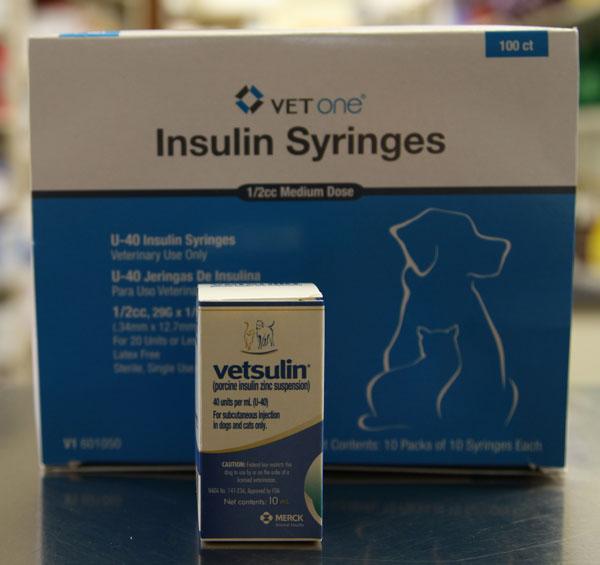
Diabetes in Pets
Tuesday, November 1, 2016
Diabetes mellitus, or diabetes, is a condition that occurs when the body cannot use glucose (a type of sugar) normally. Glucose is the main source of energy for the body’s cells. Insulin, which is produced by the pancreas, is required for the transfer of glucose from the bloodstream to the cells.
In diabetics, glucose isn’t transported into the cells and there is not enough energy for the cells to function normally. Although diabetes cannot be cured, it can be managed very successfully.
According to the American Veterinary Medical Association, diabetes in dogs and cats can occur at any age. Most dogs are diagnosed at 7 to 10 years of age while most cats are older than 6 years of age when diagnosed.
The disease is more manageable if detected early. The good news is that with the help of your veterinarian, diabetic pets can enjoy long, happy lives with proper monitoring, treatment, diet and exercise.
In human patients, diabetics are classified as Type I or Type II. Type I occurs when the pancreas does not make enough insulin. Type II occurs when the body cannot respond normally to the amount of insulin made by the pancreas. Although diabetes in pets is sometimes classified as Type I or II, the difference between the types is less clear in pets than in humans.
Obese pets are at a higher risk for developing diabetes. Aging dogs and cats may also develop other diseases that can contribute to the development of diabetes, such as overactive adrenal gland in dogs or overactive thyroid gland in cats, pancreatitis, heart disease, kidney disease, urinary tract infections and skin infections. Using medications that contain corticosteroids long-term is also a risk factor for diabetes.
Early detection of diabetes is key. If you see any of these signs, have your pet examined by your veterinarian:
- Increased urination
- Pets may empty their water bowl several times a day
- Weight loss, even though your pet’s appetite may increase
- May see increased appetite because body cells aren’t getting all the glucose they need
- Cloudy eyes, especially in dogs
- Chronic or recurring infections, including skin infections and urinary infections
While diabetes may be suspected based on signs your pet is showing, your veterinarian will confirm the diagnosis by finding consistent elevations of glucose in the blood and glucose in the urine.
Additional blood tests may be needed to rule out other medical conditions seen in older pets. A urine culture may be recommended to rule out a urinary tract infection.
Based on your pet’s individual needs, your veterinarian will recommend a diet and prescribe insulin for your pet. Insulin cannot be given orally and must be injected under the skin.
Your veterinarian or veterinary technician will teach you how to give injections using a very small needle. Insulin injections are usually well tolerated by the pet.
Once diagnosed, successful treatment of diabetes requires regular examinations, blood and urine tests, and monitoring your pet’s weight, appetite, drinking and urination. It is not a one-size-fits-all treatment. Your veterinarian may need to make adjustments periodically.
The key to managing diabetic pets is managing their diet and exercise and keeping your pet’s blood sugar near normal levels. It is important to avoid too-high or too-low levels that can be life-threatening.
Watch for signs of an insulin overdose, which can include weakness, tremors or seizures, and loss of appetite. Contact your veterinarian or an emergency clinic immediately if you see these signs.
Since signs of an insulin overdose can be similar to signs of an insulin underdose, changes in dosage and frequency of insulin injections should only be made by your veterinarian.
In addition, diabetic pets may develop other conditions long-term. Cataracts commonly develop in diabetic dogs; they rarely occur in cats. Other problems that may occur include hind leg weakness (more common in cats than dogs), high blood pressure, or lower urinary tract infections.
Regular checkups with your veterinarian will help your pet stay healthy. Diabetic dogs and cats can live long, healthy lives with proper management and veterinary care.
by Elisabeth J. Giedt, DVM
Veterinary Viewpoints is provided by the faculty of the OSU Veterinary Medical Hospital. Certified by the American Animal Hospital Association, the hospital is open to the public providing routine and specialized care for all species and 24-hour emergency care, 365 days a year.
